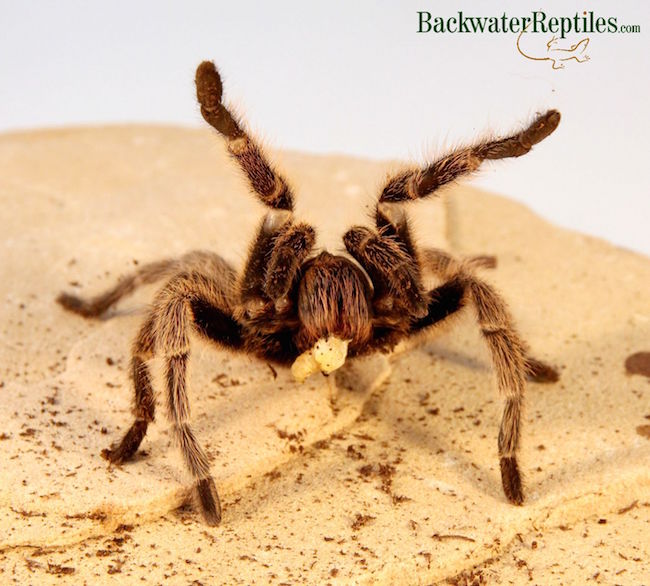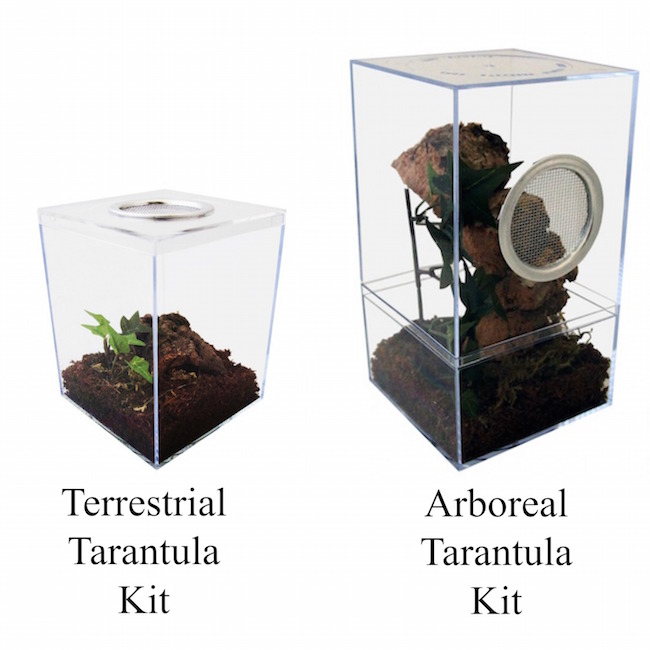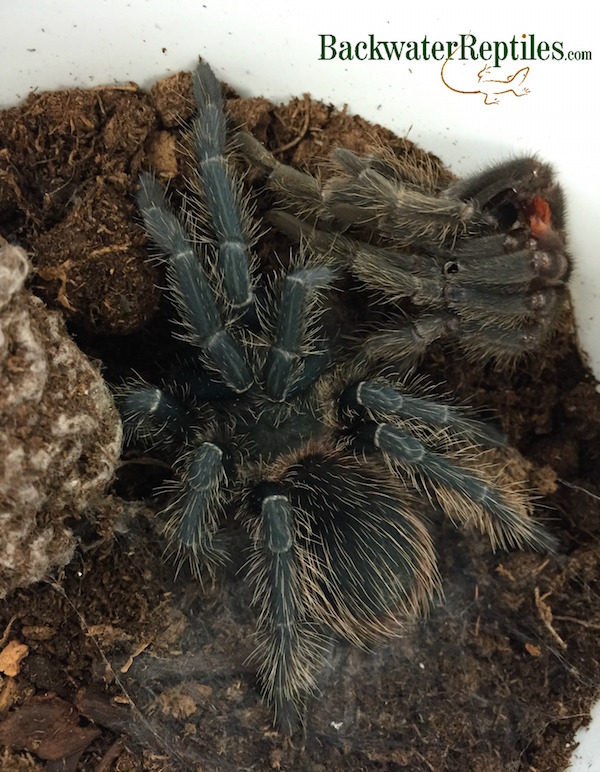We wrote the below Gooty Sapphire tarantula care sheet to help arachnid hobbyists understand more about this visually stunning spider, which also commonly goes by its scientific name: Poecilotheria metallica.
Even people who don’t “get” why anyone would want to keep a tarantula as a pet have to admit that the Gooty is a really beautiful spider. Although it begins life as a fairly ordinary brown color, after a series of molts, it will transform into a vivid, metallic blue color with accents of yellow or white in fractal patterns on its abdomen. The end result is a highly sought after species of spider that any hobbyist would be proud to own.
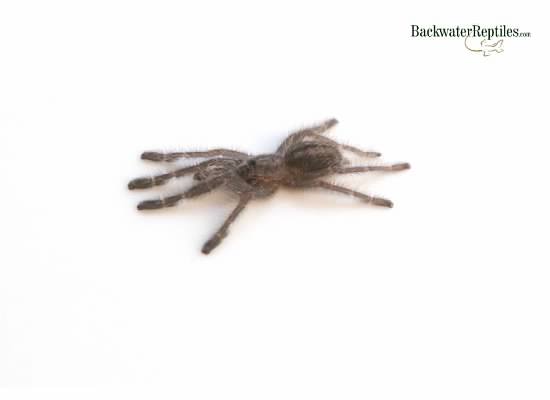
Not only is this tarantula lightning fast as both a baby, juvenile, and adult spider, but it’s also armed with a potent venom–more potent than New World tarantulas. Bite victims will experience increased heart rate followed by sweating, head ache, stinging, cramping, and of course, pain and swelling at the site of the bite.
Symptoms can persist for a week! Ultimately, what this means is that you should not handle your Gooty without protection, if ever. When kept as pets, these tarantulas are definitely made to be seen and not touched.
Although the Gooty Sapphires sold by Backwater Reptiles are captive bred spiders, this species is listed as critically endangered by the IUCN. This puts an extra degree of responsibility upon anyone who wants to own one as a pet.
Gooties are not common spiders, and therefore not common pets, so we highly recommend doing your research and being positive you can handle such a rare spider before you purchase.
As far as care is concerned, Gooty Sapphire Tarantulas are arboreal spiders, so their habitat needs to replicate a tree-dwelling spider’s habitat. Small spiderlings don’t require much room to thrive, but they do need items to crawl on and hide inside of.
We recommend our arboreal tarantula terrarium kit for the sake of convenience and visibility, although you can just as easily house a spiderling in a plastic shoe box with a very secure lid. Again, just make sure to provide a few hiding places.

Adult Gooties will require a bit more room than a spiderling, obviously. Due to their arboreal nature, we recommend an enclosure that has a bit of height to accommodate a tree branch or two for your spider to climb on.
No matter the age of your Gooty, it might be sensitive to light, so we recommend storing your spider’s home somewhere fairly dark and out of reach of direct sunlight.
Room temperature is generally acceptable for a Gooty, but make sure that it stays within the range of high 70s during the day and low 70s during the evening. If your home does not naturally stay at this temperature, invest in a heat pad and thermometer.

Peat moss and coconut fibers are the recommended substrates. Both will retain moisture but not become overly soaked. We don’t recommend misting your Gooty’s enclosure, but rather moistening the substrate once per month. Keeping a water dish in the enclosure will also help keep the moisture level at an acceptable range, even if your Gooty doesn’t actually drink the water.
Feeding your Gooty Sapphire is relatively simple. Spiderlings will eat pinhead crickets and fruit flies, while adults will happily consume crickets, wax worms, reptiworms, and even roaches. Due to their photosensitivity, it’s usually best to feed your Gooty around dusk.
We’ve heard success stories that involved simply dropping an insect or two in the cage at night before bed. The spider will eat it during the night. But always make sure the insect is no larger than the tarantula’s abdomen.
If you purchase a spiderling, you can expect for it to take approximately a year for your spider to undergo enough molts to finally start sporting the blue color these spiders are named and known for. Don’t be surprised if your Gooty refuses food prior to molting either as this is very common.
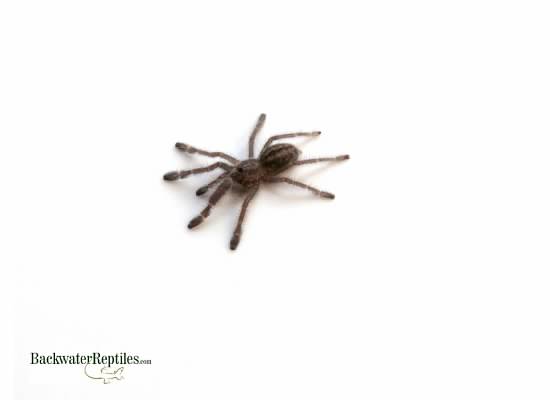
Conclusion
Gooty Sapphire Tarantulas just might be the spider to cure your arachnophobia. They’re strikingly colorful tarantulas and can make extremely rewarding pets.
If you’ve done your research and are prepared keep your own Gooty Sapphire tarantula, Backwater Reptiles has some captive bred spiderlings for sale.


